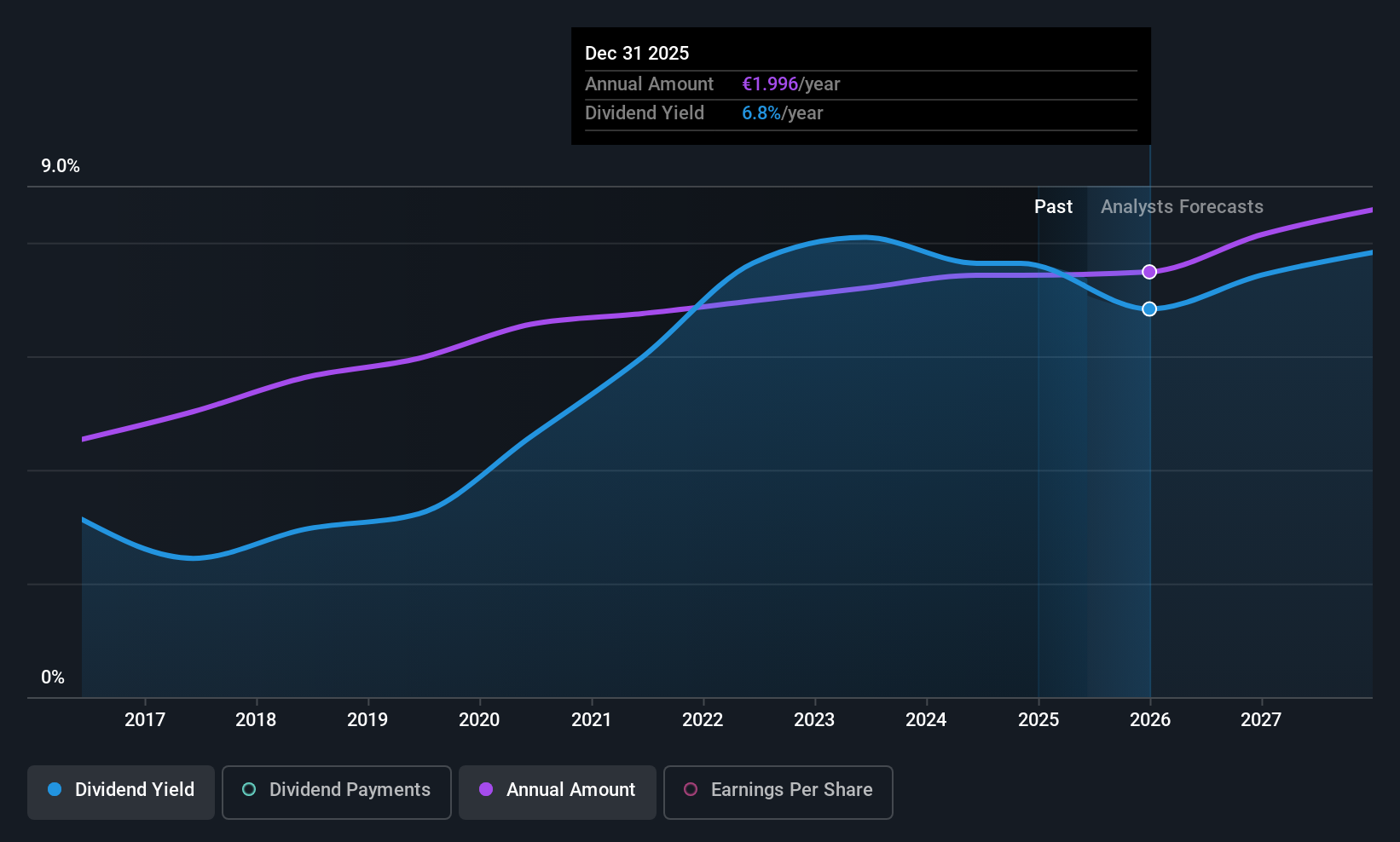Read This Before Considering Rubis (EPA:RUI) For Its Upcoming €2.03 Dividend
Readers hoping to buy Rubis (EPA:RUI) for its dividend will need to make their move shortly, as the stock is about to trade ex-dividend. The ex-dividend date is usually set to be two business days before the record date, which is the cut-off date on which you must be present on the company's books as a shareholder in order to receive the dividend. It is important to be aware of the ex-dividend date because any trade on the stock needs to have been settled on or before the record date. In other words, investors can purchase Rubis' shares before the 17th of June in order to be eligible for the dividend, which will be paid on the 19th of June.
The company's next dividend payment will be €2.03 per share, on the back of last year when the company paid a total of €2.03 to shareholders. Last year's total dividend payments show that Rubis has a trailing yield of 6.9% on the current share price of €29.22. If you buy this business for its dividend, you should have an idea of whether Rubis's dividend is reliable and sustainable. That's why we should always check whether the dividend payments appear sustainable, and if the company is growing.
If a company pays out more in dividends than it earned, then the dividend might become unsustainable - hardly an ideal situation. Rubis paid out 61% of its earnings to investors last year, a normal payout level for most businesses. A useful secondary check can be to evaluate whether Rubis generated enough free cash flow to afford its dividend. It paid out more than half (68%) of its free cash flow in the past year, which is within an average range for most companies.
It's encouraging to see that the dividend is covered by both profit and cash flow. This generally suggests the dividend is sustainable, as long as earnings don't drop precipitously.
Check out our latest analysis for Rubis
Click here to see the company's payout ratio, plus analyst estimates of its future dividends.

Have Earnings And Dividends Been Growing?
Stocks in companies that generate sustainable earnings growth often make the best dividend prospects, as it is easier to lift the dividend when earnings are rising. If earnings fall far enough, the company could be forced to cut its dividend. This is why it's a relief to see Rubis earnings per share are up 3.2% per annum over the last five years. Earnings growth has been slim and the company is paying out more than half of its earnings. While there is some room to both increase the payout ratio and reinvest in the business, generally the higher a payout ratio goes, the lower a company's prospects for future growth.
Another key way to measure a company's dividend prospects is by measuring its historical rate of dividend growth. Rubis has delivered 7.1% dividend growth per year on average over the past 10 years. We're glad to see dividends rising alongside earnings over a number of years, which may be a sign the company intends to share the growth with shareholders.

The Bottom Line
Has Rubis got what it takes to maintain its dividend payments? Earnings per share growth has been unremarkable, and while the company is paying out a majority of its earnings and cash flow in the form of dividends, the dividend payments don't appear excessive. Overall, it's not a bad combination, but we feel that there are likely more attractive dividend prospects out there.
If you want to look further into Rubis, it's worth knowing the risks this business faces. For instance, we've identified 3 warning signs for Rubis (1 is significant) you should be aware of.
Generally, we wouldn't recommend just buying the first dividend stock you see. Here's a curated list of interesting stocks that are strong dividend payers.
Have feedback on this article? Concerned about the content? Get in touch with us directly. Alternatively, email editorial-team (at) simplywallst.com.
This article by Simply Wall St is general in nature. We provide commentary based on historical data and analyst forecasts only using an unbiased methodology and our articles are not intended to be financial advice. It does not constitute a recommendation to buy or sell any stock, and does not take account of your objectives, or your financial situation. We aim to bring you long-term focused analysis driven by fundamental data. Note that our analysis may not factor in the latest price-sensitive company announcements or qualitative material. Simply Wall St has no position in any stocks mentioned.
 Wall Street Journal
Wall Street Journal